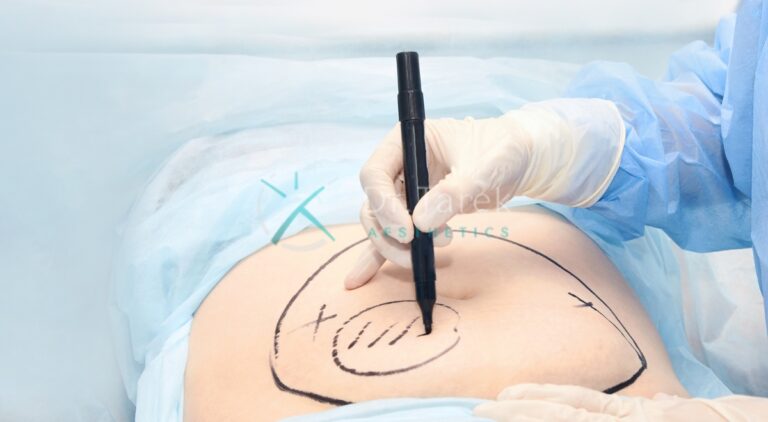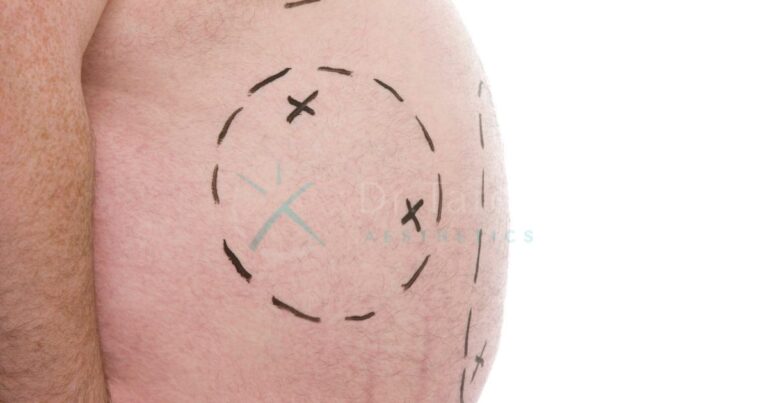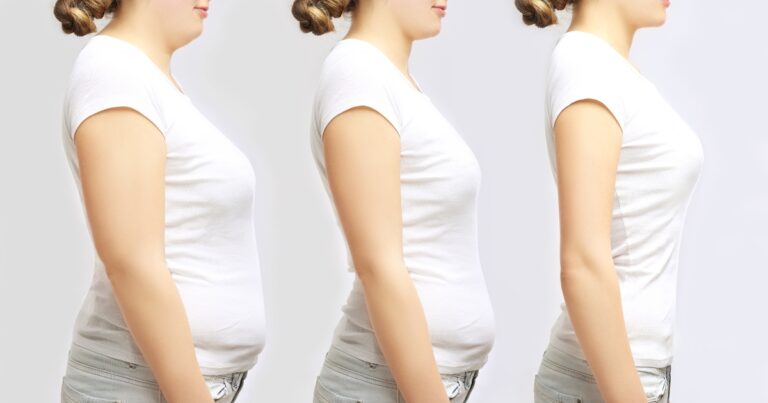When to Exercise After Liposuction
Liposuction is a popular cosmetic procedure that helps remove stubborn fat deposits from various areas of the body. While the surgery itself can provide impressive results, maintaining those results and achieving optimal outcomes requires a commitment to a healthy lifestyle, including regular exercise. However, knowing when to resume physical activity after liposuction is crucial for a safe and successful recovery. In this comprehensive guide, we’ll explore the timeline for returning to exercise after liposuction and provide valuable insights to help you make the most of your post-surgery journey.
Why Exercise is Important After Liposuction
Benefits of Post-Liposuction Exercise
Exercise plays a vital role in the recovery process and long-term success of liposuction. Regular physical activity helps improve circulation, reduce swelling, and promote healing. It also aids in maintaining the new body contours achieved through the procedure. Dr. Tarek, a renowned plastic surgeon, emphasizes that “Exercise after liposuction is not just about maintaining results; it’s about enhancing overall health and well-being.”
Body Contouring Uae offers treatments to reshape and improve body appearance
patients in Body Contouring Uae can get procedures like tummy tucks and liposuction
Total Body Sculpting helps shape and tone your whole body
it uses exercises and special machines to target different body parts for a better look
Preventing Weight Gain After Liposuction
One of the primary reasons to incorporate exercise into your post-liposuction routine is to prevent weight gain. Liposuction removes fat cells from specific areas, but it doesn’t prevent new fat from accumulating in other parts of the body. By engaging in regular physical activity, you can help maintain your weight and preserve the results of your procedure.
Book A Consultation With Dr Tarek Bayazid
Top-rated Plastic Surgeon For Liposuction in Dubai
Installment Plan Available
- Boosts metabolism
- Builds lean muscle mass
- Enhances fat burning
- Improves body composition
How Soon Can I Exercise After My Liposuction Procedure?
The timeline for resuming exercise after liposuction varies depending on the extent of the procedure and individual healing rates. It’s essential to follow your surgeon’s specific instructions and listen to your body throughout the recovery process.
Immediate Post-Op (First Few Days)
In the immediate aftermath of liposuction, rest is crucial. Your body needs time to heal, and engaging in strenuous activities can hinder the recovery process. During this period, focus on gentle movements and follow your surgeon’s post-operative care instructions.
Early Recovery (2-3 Weeks)
As you enter the early recovery phase, you may begin to incorporate light physical activities into your routine. However, it’s important to avoid any exercises that put strain on the treated areas or elevate your heart rate significantly.
Mid Recovery (3-6 Weeks)
During the mid-recovery phase, you can gradually increase your activity level. This is the time to reintroduce low-impact exercises and start building your strength and endurance.
Late Recovery (6+ Weeks)
By the late recovery phase, most patients can return to their regular exercise routines. However, it’s essential to listen to your body and consult with your surgeon before engaging in high-intensity workouts or contact sports.
| Recovery Phase | Recommended Activities | Activities to Avoid |
| Immediate Post-Op | Rest, gentle walking | All strenuous activities |
| Early Recovery | Light walking, stretching | Running, weightlifting |
| Mid Recovery | Low-impact cardio, light resistance training | High-intensity workouts |
| Late Recovery | Most regular exercises | Contact sports (with surgeon’s approval) |
Light Physical Activity 
Short, Slow Walks
Short, slow walks are an excellent way to ease back into physical activity after liposuction. These gentle exercises promote blood circulation, reduce the risk of blood clots, and help alleviate swelling. Start with brief 5-10 minute walks around your home or neighborhood, gradually increasing the duration as you feel comfortable.
Gentle Stretching
Incorporating gentle stretching exercises into your routine can help improve flexibility and reduce muscle tension. Focus on stretches that don’t put pressure on the treated areas and always listen to your body to avoid overexertion.
- Start with 5-10 minute sessions
- Focus on deep breathing during stretches
- Avoid stretches that target treated areas
- Gradually increase duration and intensity
Aerobic Activity
Light Cardio
As you progress in your recovery, you can begin to introduce light cardio exercises. These activities help improve cardiovascular health and boost your overall energy levels. Start with low-impact options and gradually increase the intensity as your body allows.
Walking and Jogging
Walking and jogging are excellent forms of aerobic exercise that can be easily modified to suit your recovery stage. Begin with brisk walking and progress to light jogging as you feel more comfortable and your surgeon gives you the green light.
- Start with 15-20 minute sessions
- Monitor your heart rate
- Stay hydrated during workouts
- Wear supportive compression garments if recommended
Resistance Exercises
Light Resistance Training
Incorporating light resistance training into your post-liposuction exercise routine can help tone muscles and improve overall body composition. Start with bodyweight exercises and gradually progress to using light weights or resistance bands.
Weightlifting
Weightlifting can be an effective way to build strength and maintain your liposuction results. However, it’s crucial to approach this type of exercise cautiously and under the guidance of your surgeon or a qualified fitness professional.
- Begin with low weights and high repetitions
- Focus on proper form to avoid injury
- Target major muscle groups
- Gradually increase weight and intensity over time
Safe Post-Lipo Workouts: Slow and Steady Wins the Race
Importance of Gradual Progression
When it comes to exercising after liposuction, the key is to progress gradually. Rushing into intense workouts can lead to complications and potentially compromise your results. Dr. Tarek advises, “Patience is crucial in the post-liposuction recovery process. A slow and steady approach to exercise ensures optimal healing and long-lasting results.”
Monitoring Your Body’s Response
Pay close attention to how your body responds to different types of exercise. If you experience pain, swelling, or discomfort, it’s essential to scale back your activities and consult with your surgeon.
- Keep a workout journal to track progress
- Note any unusual symptoms or discomfort
- Adjust your routine based on your body’s feedback
- Communicate regularly with your surgeon about your exercise regimen
Intensify Post-Lipo Physical Activity
High-Impact Training
As you reach the later stages of recovery, you may be ready to incorporate high-impact training into your routine. These exercises can help further sculpt your body and maintain your liposuction results. However, it’s crucial to obtain clearance from your surgeon before engaging in any high-intensity activities.
Advanced Cardio Workouts
Advanced cardio workouts can help boost your metabolism and enhance fat burning. Options like interval training, spinning classes, or dance-based workouts can be excellent choices for maintaining your new body contours.
- Start with shorter high-intensity intervals
- Gradually increase workout duration and intensity
- Incorporate a variety of cardio exercises to prevent boredom
- Listen to your body and take rest days when needed
Preserving Your Transformation: Beyond Physical Engagement 
Combining Diet and Exercise
While exercise is crucial for maintaining your liposuction results, it’s equally important to focus on your diet. A balanced, nutritious eating plan complements your workout routine and helps you maintain a healthy weight.
Long-Term Maintenance Tips
Maintaining your liposuction results requires a long-term commitment to a healthy lifestyle. Here are some tips to help you preserve your transformation:
- Stay consistent with your exercise routine
- Practice portion control and mindful eating
- Stay hydrated by drinking plenty of water
- Get adequate sleep to support recovery and overall health
- Manage stress through relaxation techniques or meditation
Personal Stories: Resilience, Recovery, and Return to Fitness
Real-Life Experiences
Many individuals who have undergone liposuction have inspiring stories of their journey back to fitness. These personal accounts can provide motivation and valuable insights for those in the recovery process.
Overcoming Challenges
Recovery after liposuction can present various challenges, but with determination and the right approach, these obstacles can be overcome. Patients often report feeling more confident and motivated to maintain a healthy lifestyle after seeing their liposuction results.
- Join support groups or online forums to connect with others
- Celebrate small victories throughout your recovery journey
- Set realistic goals for your fitness progress
- Seek professional guidance when needed
Challenges: Mitigating Risks and Addressing Concerns
Managing Pain and Discomfort
Some discomfort is normal during the recovery process, but it’s important to distinguish between normal healing sensations and potential complications. Always communicate any concerns with your surgeon and follow their guidance for pain management.
Avoiding Overexertion
While it’s important to stay active during recovery, overexertion can lead to setbacks and potentially compromise your results. Be mindful of your limits and gradually increase your activity level as your body heals.
- Use pain as a guide to adjust your activity level
- Take breaks when needed during workouts
- Avoid comparing your progress to others
- Focus on consistency rather than intensity
FAQs: Exercise and Liposuction Recovery
When can I exercise after liposuction?
The timeline for resuming exercise after liposuction varies depending on the individual and the extent of the procedure. Generally, light walking can begin within a few days post-surgery, while more strenuous activities may need to wait 4-6 weeks or longer. Always follow your surgeon’s specific instructions and listen to your body throughout the recovery process.
What exercises should I avoid after liposuction?
In the early stages of recovery, it’s best to avoid high-impact exercises, heavy lifting, and activities that put strain on the treated areas. This includes running, jumping, and intense weightlifting. As you progress in your recovery, you can gradually reintroduce these activities under the guidance of your surgeon.
Can exercise improve my liposuction results?
Yes, exercise can significantly improve and maintain your liposuction results. Regular physical activity helps tone muscles, burn fat, and improve overall body composition. By combining a consistent exercise routine with a healthy diet, you can enhance and prolong the effects of your liposuction procedure.
What should I do if I experience pain or discomfort while resuming exercise after lipo?
If you experience pain or discomfort while exercising after liposuction, it’s important to stop the activity immediately. Rest and apply ice to the affected area if needed. If the pain persists or worsens, contact your surgeon for guidance. They may recommend modifying your exercise routine or scheduling a follow-up appointment to assess your recovery progress.







